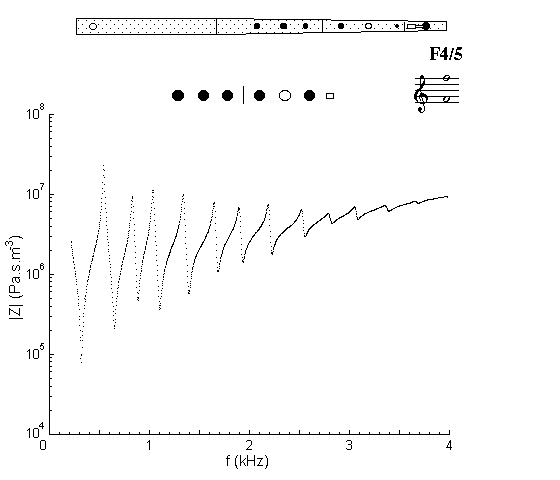| Acoustics of baroque, classical and modern flutes |
baroque flute |
F4 |

|
Acoustic and Fingering Schematic Non-specialist introduction
to acoustic impedance |
This uses an explicit cross-fingering: the RH 3rd finger closes a hole downstream of the first open one (under RH 2nd). It is more strongly cross-fingered than the (implicitly cross-fingered) E4, because now two downstream holes are closed (RH 3rd and the key).
The extent of the standing wave beyond an open hole increases with the frequency, especially for small holes. This has the effect of making the effective length of the flute increase with increasing frequency. As a result, the minima at higher frequencies are flatter than strict harmonic ratios. Only the first two minima are in harmonic ratios (f, 2f) and so the intensity of the third and higher harmonics in the sound spectrum are substantially reduced. Thus this note has a considerably darker timbre than do the notes on either side. For more detail on cross fingering see that section in the introduction to flute acoustics, or download a brief scientific report on cross fingerings.

Sound spectrum
of a baroque flute played using fingering for F4.
![]()
![]()
![]()
![]() You can hear F4
played by Matthew Ridley.
You can hear F4
played by Matthew Ridley.
| Acoustic measurements are available for these flutes - modern B, modern C, classical C, classical D, classical flared, baroque Sound clips are available for modern B, classical flared and baroque |
To compare flutes, it is easiest to open a separate browser window for each instrument. |